 |
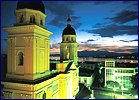 |
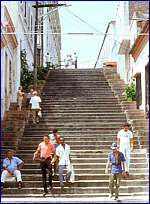
Santiago de Cuba
Cuba's second largest city, Santiago de Cuba, is the most “Caribbean” of the island’s cities, greatly influenced by immigration and trade from other Caribbean islands. It is proud of its revolutionary heroes, beautiful squares and vibrant musical tradition. And it is known particularly for its carnival.
Founded by Spanish conquistadors in 1515, Santiago de Cuba’s revolutionary past has been scarred by pirate attacks, Spanish domination and US military intervention. For its heroic role, the city was awarded the title, “City of Heroes” in 1984.
| Places to visit |
![]() Santiago's urban core
Santiago's urban core 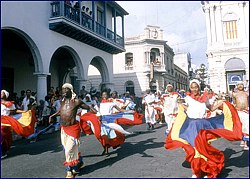
Revolves around Céspedes Park, near the historical City Hall, the Cathedral Church and the old (early 16th century) mansion owned by Diego Velázquez, Spain's chief conquistador.
![]() House of son and bolero
House of son and bolero
These two Cuban musical expressions usually performed by troubadours have their "house" here, on the corner of Heredia and San Félix streets. Santiago's colourful carnivals, with their congas and festivities of true Caribbean flavour, are famous here.
![]() The Bacardí Museum
The Bacardí Museum
Houses aboriginal objects, works by Cuban and European painters and a stretch of street from the colonial city. A 3,000-year-old Egyptian and two Peruvian mummies are also on display.
![]() The Moncada Barracks
The Moncada Barracks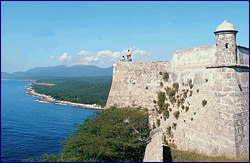
An old military enclave that, during Batista's dictatorship, was attacked by a group of revolutionaries commanded by Fidel Castro. Transformed into a school complex, the building also houses a museum.
![]() José Martí's Mausoleum at Santa Ifigenia cemetery
José Martí's Mausoleum at Santa Ifigenia cemetery
Martí died in combat at Dos Ríos, near Santiago, in 1895.
![]() Major General Antonio Maceo Revolution Square
Major General Antonio Maceo Revolution Square
Site of meetings and parades, this was named after the heroic rebel who fought in the wars for independence against Spain.
![]() The Heredia Convention Centre
The Heredia Convention Centre
Cuba's second largest, hosts meetings and various festivities, among them the Caribbean International Trade Fair.
![]() The Piracy Museum at Santiago's Morro
The Piracy Museum at Santiago's Morro 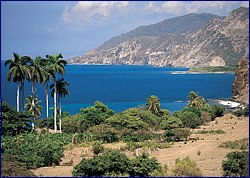
(or San Pedro de la Roca) Castle on the Bay entrance. This fortress was declared a World Heritage Site by UNESCO in 1997.
![]() Tropicana Santiago
Tropicana Santiago
Is a grand cabaret devoted mostly to Cuban-Caribbean rhythms. But it also features other fine artistic performances and excellent cuisine and beverages.
![]() Loma de San Juan
Loma de San Juan
(San Juan Hill). Location of the final combat of the Spanish-Cuban-North American conflict, with the participation of troops from all three nations.
![]() Beaches
Beaches
On the Caribbean coastline east and west of Santiago, include 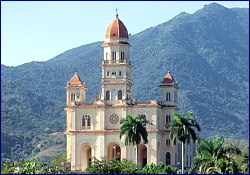 Baconao Park with its natural lagoon, hotels and entertainment facilities.
Baconao Park with its natural lagoon, hotels and entertainment facilities.
![]() Nuestra Señora de la Caridad del Cobre National Sanctuary
Nuestra Señora de la Caridad del Cobre National Sanctuary
The Cuban patroness' temple is located in a small village west of Santiago. Pope John Paul II crowned the virgin during a religious ceremony held here on occasion of his visit to the city in 1998, and Hemingway left his Nobel Prize here.
![]() Gran Piedra
Gran Piedra
(The Great Stone) is an enormous monolith that sits on top of a high mountain (1,226 metres high), with a lookout post and a hotel.
![]() Isabelica's French coffee plantations
Isabelica's French coffee plantations
Are near Gran Piedra and the ruins of old 18th- and 19th-century palaces.
![]() Turquino National Park
Turquino National Park 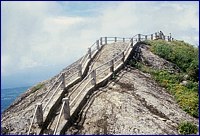
Has Cuba's highest peak (1,974 metres high) in the Sierra Maestra mountains.
![]() The coastal Santiago-Pilón
The coastal Santiago-Pilón
(Granma province) highway is a scenic drive past mountains, beaches and sea. Highlights along this irregular coast include the remains of old Spanish warships, including those sunken by US squadrons during the naval battle for Santiago de Cuba in 1898.
 25.24°C
25.24°C




